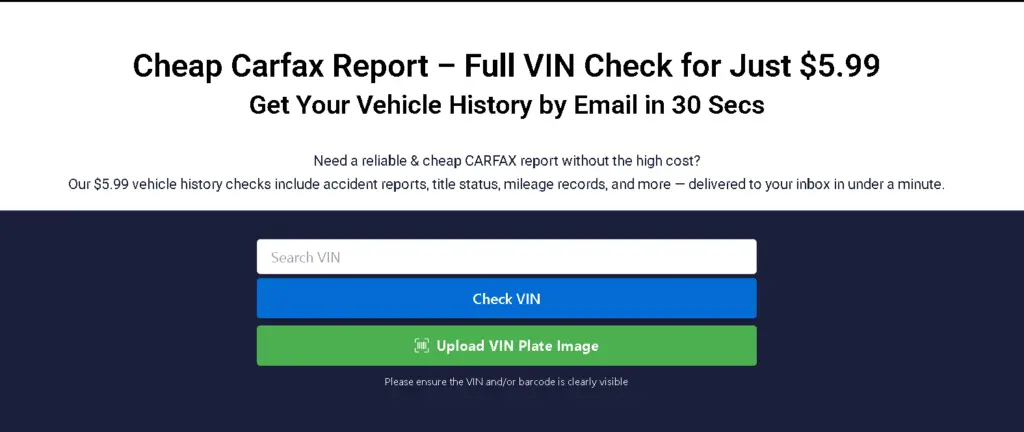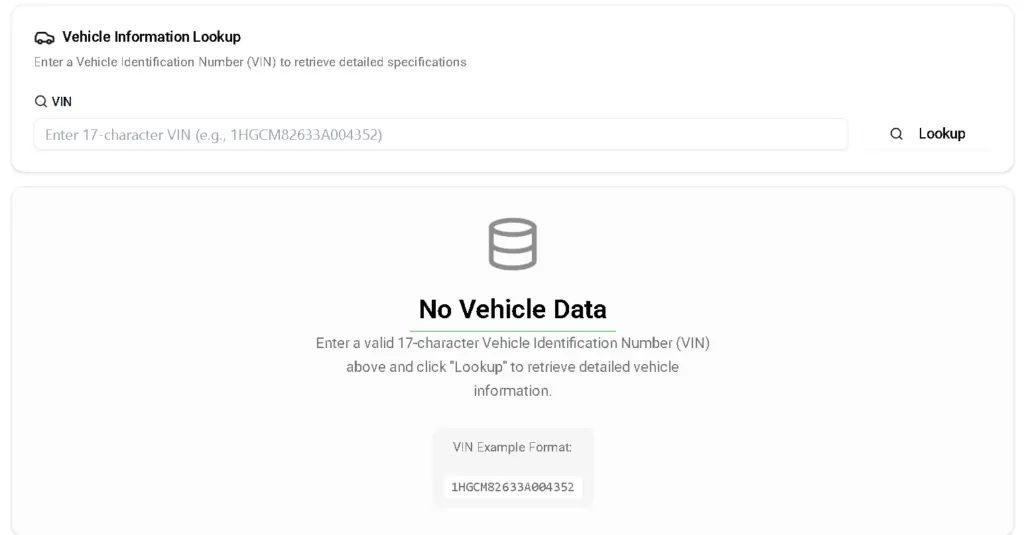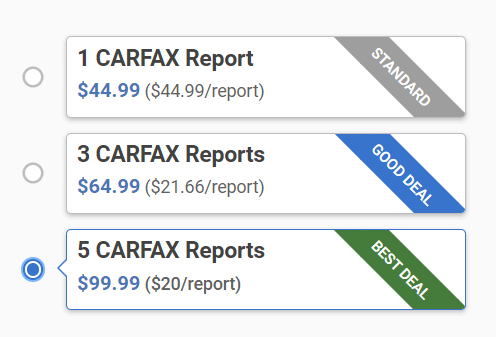Understanding a vehicle’s true worth is crucial for anyone looking to sell, trade, or simply evaluate their automotive investment. Carfax trade-in value tells us everything about how much our car is worth.
Whether someone owns a reliable daily driver or is considering a new Ford vehicle, knowing the accurate market value can make all the difference in financial decisions.
Our cheap Carfax tool provides comprehensive information about it. It helps you with your car’s estimated and wholesale value.
What is CarFax Trade-In Value?
A Carfax trade-in value is a method for determining the car’s worth when selling or trading it at a dealership. This comprehensive valuation system takes into account multiple factors that traditional pricing guides might overlook, providing car owners with a realistic expectation of their vehicle’s worth in today’s market.
Due to its excellent explanation and comprehensive car details, it has gained popularity because it considers the complete picture of a vehicle’s background and current market conditions.

Different Ways To Get Car Values
Trade-In Value vs. Private Party Value
When evaluating a car’s worth, it’s important to understand the distinction between trade-in value and Private Party Value. The trade-in option typically offers convenience but often results in lower financial returns compared to private sales.
However, many vehicle owners prefer this route due to its simplicity and the ability to apply the value directly toward a new purchase.
According to Market Condition
The value of a vehicle directly relates to the market condition. The government taxes or any other factor can influence the vehicle price.
Key Factors Affecting Your Car’s Worth
Vehicle History
Bad car history? Such as accidents or a title change? These are some of the major reasons that can affect your car’s worth. Understanding the deeper implications of Carfax history-based value can help vehicle owners better appreciate how their car’s past directly influences its current market value.
Therefore, you must get a vehicle history report of your vehicle to get its history. These reports often reveal information that might not be immediately apparent during a physical inspection, making them invaluable tools for accurate valuation.
Vehicle Identification Number (VIN)
Every vehicle identification number tells a unique story about the car’s manufacturing details, specifications, and recall history. The make and model information helps determine the base value, while specific features and options can add or subtract from the final assessment.
Learning how to decode a VIN number empowers car owners with the knowledge to extract valuable information that directly impacts their vehicle’s valuation and marketability.
Check out your vehicle’s VIN with our free tool.

Service History and Maintenance Records
Proper documentation of service history demonstrates responsible ownership and can significantly boost a vehicle’s perceived value. Regular maintenance records show that the owner has invested in keeping the vehicle in optimal condition, which translates to higher confidence from potential buyers or dealers.
Complete service records should include routine maintenance like oil changes, tire rotations, and brake service, as well as any major repairs or component replacements. This documentation helps justify asking prices and supports negotiations during the selling process.
How to Maximize Your Vehicle Trade Value?
Value Range Optimization
Understanding the potential Value Range for any vehicle helps owners set realistic expectations and identify opportunities for value enhancement. Small improvements or proper presentation can often move a vehicle from the lower end to the higher end of its expected range.
Strategic timing also influences where a vehicle falls within its Value Range. Market conditions, seasonal demands, and inventory levels all impact final valuations and should be considered when planning a sale.
High-Impact Physical Improvements
Addressing minor cosmetic issues like small dents, scratches, or worn tires eliminates negative first impressions that might cause buyers to focus on flaws rather than positive attributes.
Simple maintenance tasks like changing fluids, replacing burnt-out bulbs, and ensuring all features function properly demonstrate attention to detail that buyers interpret as overall reliability.
Negotiation Preparation
Enter discussions with a clear bottom line and leverage in hand. Determine your absolute floor price based on your research, and be prepared to walk away if an offer falls short. Use competing dealer quotes to create a bidding environment, and consider bundling your trade-in with a new purchase to negotiate the overall package more effectively.
Conclusion
Determining your vehicle’s true worth requires a multifaceted approach that goes beyond simply plugging numbers into an online calculator. By leveraging Carfax Trade-In Value, alongside understanding trade-in versus private-party prices, decoding your VIN, and reviewing complete service and accident history, you gain a clear, data-driven picture of your vehicle’s market value.




